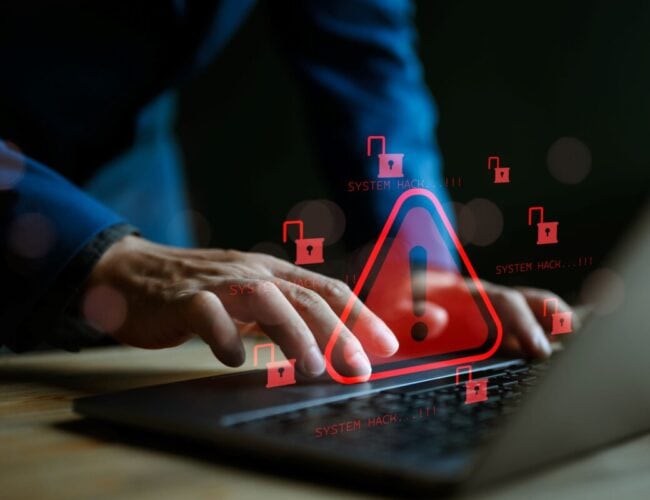
Network security is critical to modern business operations, protecting sensitive data from cyber threats, unauthorized access, and potential breaches. With cyberattacks becoming increasingly sophisticated, organizations must implement robust security measures to safeguard their networks. Utilizing the right tools can significantly enhance protection, reduce vulnerabilities, and ensure compliance with industry standards.
A multi-layered security approach is essential, combining firewalls, intrusion detection systems, encryption protocols, and continuous monitoring. Businesses must stay proactive by adopting the latest technologies and best practices to mitigate risks effectively.
Read on to learn how to improve network security with the following essential tools:
Firewalls
Next-generation firewalls (NGFWs) can represent a significant evolution in network security, integrating multiple advanced protection layers into a single solution. Unlike traditional firewalls that only examine ports and protocols, NGFWs can perform deep packet inspection with application awareness, enabling them to identify and control specific applications regardless of port. They can incorporate SSL/TLS decryption to examine encrypted traffic, coupled with continuously updated threat intelligence feeds for real-time protection against emerging risks.
However, for organizations seeking comprehensive cybersecurity protection, working with providers like XL.net can provide advanced solutions tailored to modern threats.
Intrusion Detection and Prevention Systems (IDPS)
Modern IDPS (Intrusion Detection and Prevention Systems) utilize deep packet inspection and machine learning to analyze network traffic patterns, instantly flagging and neutralizing threats like brute force attacks, data exfiltration, or zero-day exploits. These systems automatically update threat signatures and can integrate with firewalls to quarantine malicious actors while providing forensic data for security teams.
Indeed, a strong IT infrastructure is fundamental to maintaining robust network security, and businesses can enhance their defenses with expert support as per Base Solutions or similar providers in their area.
Virtual Private Networks (VPNs)
Modern VPN solutions can provide essential secure connectivity for remote workers and distributed enterprises. By establishing encrypted tunnels using advanced protocols like WireGuard or IPSec, these systems can protect sensitive data transmissions from eavesdropping on public Wi-Fi and untrusted networks. Business-grade VPN implementations can now incorporate zero-trust principles, offering features like split tunneling to optimize bandwidth while maintaining robust security. These solutions enable secure remote access controls to cloud-based resources and on-premises systems, with comprehensive logging and monitoring capabilities that give IT teams complete visibility.
Endpoint Protection Platforms (EPP)
Endpoint Protection Platforms can represent the evolution of traditional antivirus solutions, providing comprehensive defense against modern cyber threats. These advanced systems can combine signature-based detection with behavioral analysis, machine learning, and application control to identify and block sophisticated attacks. EPP solutions can also protect against ransomware, zero-day exploits, and fileless malware that bypass conventional security measures.
Furthermore, cloud-managed platforms enable centralized administration of security policies across all devices, regardless of location. Security teams can quickly contain threats across distributed workforces with real-time monitoring and automated response capabilities.
Multi-Factor Authentication (MFA)
Multi-Factor Authentication has become a critical component of identity and access management strategies. By requiring multiple verification factors, such as passwords, security tokens, or biometrics, MFA can significantly reduce the risk of account compromise. Modern implementations use adaptive authentication that evaluates contextual factors like device, location, and behavior patterns to determine authentication requirements.
Additionally, enterprise MFA solutions can support various methods including push notifications, hardware tokens, and biometric authentication, allowing organizations to balance security with user convenience.
Security Information and Event Management (SIEM)

SIEM systems can provide organizations comprehensive visibility into their security posture by aggregating and analyzing data from across the IT environment. These powerful tools can collect logs from network devices, servers, applications, and security systems, applying correlation rules and machine learning to identify potential threats.
Also, advanced SIEM solutions offer real-time alerting, automated response capabilities, and sophisticated threat detection through user and entity behavior analytics (UEBA). They play a crucial role in incident response by providing security teams with centralized investigation tools and forensic capabilities.
Data Encryption Tools
Data encryption serves as the last defense in cybersecurity, ensuring information remains protected even if other security measures fail. Advanced encryption standards like AES-256 can provide robust protection for data at rest in storage systems and databases, as well as data in transit across networks. Modern encryption solutions can also implement proper key management practices, including secure key generation, storage, rotation, and destruction.
Lastly, enterprise-grade encryption tools offer transparent operation that doesn’t disrupt business processes while maintaining strong security.
Patch Management Software
Effective patch management is essential for maintaining system security and preventing exploitation of known vulnerabilities. Automated patch management solutions can streamline identifying, testing, and deploying updates across diverse IT environments. These tools can provide centralized control over operating systems, applications, and firmware patching, with customizable deployment schedules to minimize business disruption.
Additionally, advanced solutions include vulnerability assessment capabilities to prioritize critical patches and verify successful installation. Cloud-based patch management systems can update remote and mobile devices regardless of location.
Network Segmentation
Network segmentation is a fundamental security strategy that limits the potential impact of security breaches by dividing networks into isolated zones. This approach prevents lateral movement of threats, containing malware outbreaks and limiting unauthorized access to sensitive systems.
Moreover, modern implementations use software-defined networking (SDN) technologies to create dynamic, policy-based segmentation that adapts to changing network requirements. Segmentation can also be implemented at various levels, from VLANs for basic separation to micro-segmentation for granular east-west traffic control.
Penetration Testing Tools
Penetration testing tools enable security teams to conduct controlled, simulated cyberattacks that uncover network, application, and system vulnerabilities. By proactively identifying security gaps—such as misconfigurations, weak credentials, or unpatched software—organizations can strengthen defenses before real hackers strike. These ethical hacking exercises can provide actionable insights to prevent costly breaches.
Conclusion
Enhancing network security requires advanced tools, proactive strategies, and expert support. By leveraging these essential technologies, businesses can strengthen their defenses and reduce the risk of cyber incidents.